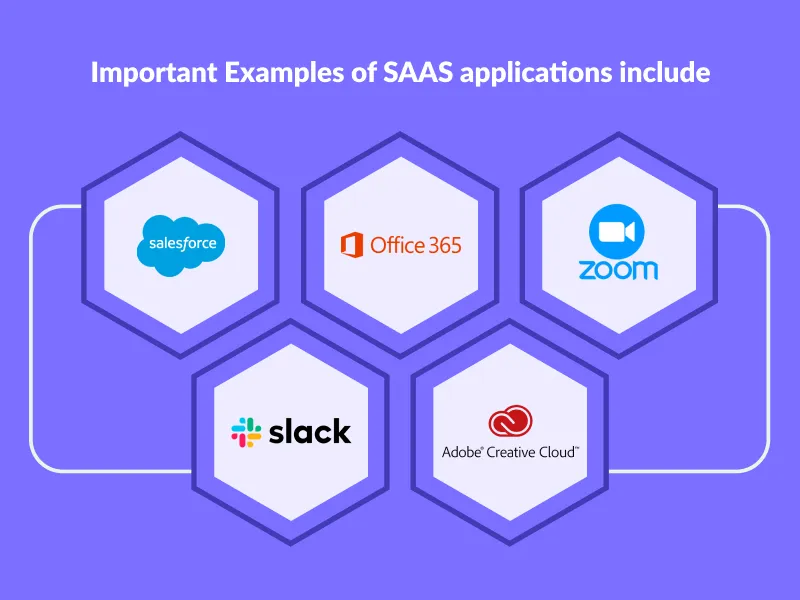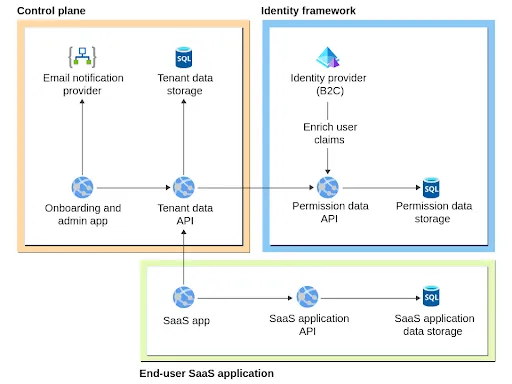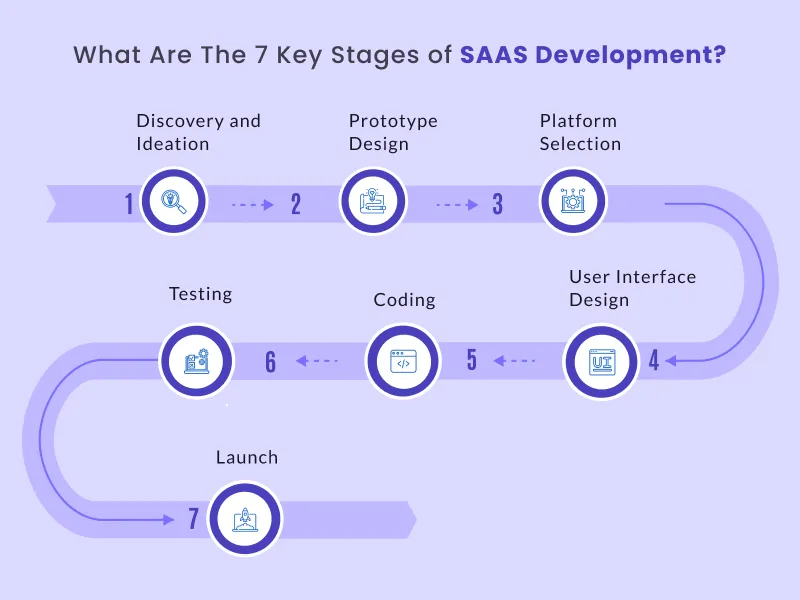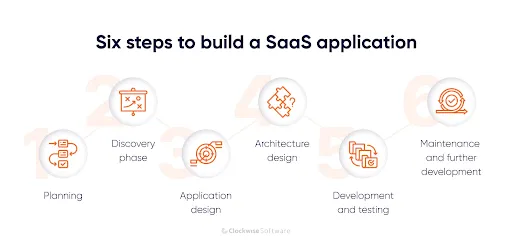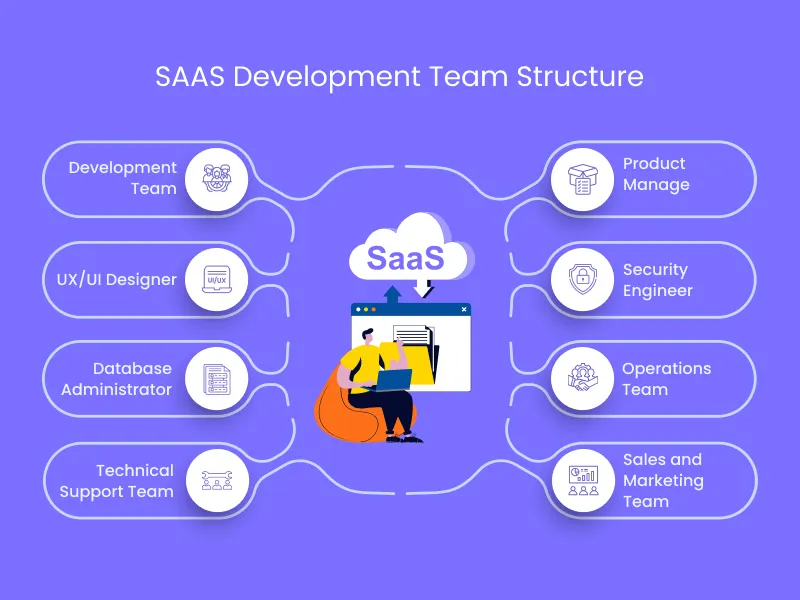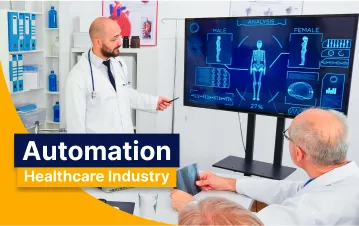SaaS is an increasingly popular business model for organizations of all sizes and industries. It offers customers a cost-effective way to obtain software without managing any underlying infrastructure, storage, platform, or applications.
Additionally, with SaaS, organizations can benefit from quick access to up-to-date software versions and receive frequent updates as soon as they are released. But, there are many challenges associated with developing a successful SAAS application, such as scalability and security. However, one can implement the solutions to make the process easier.
So, we will discuss the various SAAS Application Development stages and the common challenges marketers and developers face. We will also provide strategies for overcoming these challenges and implementing practical solutions.
By the end of this comprehensive guide, you will better understand the SAAS application development process and ways to address any obstacles you might encounter.
SAAS Application Development: An Overview
Software as a Service is a software licensed delivery model where software is licensed on a subscription basis. And, it is centrally hosted. It is mostly referred to as “on-demand software” and is typically accessed by users using a thin client via a web browser. The customer does not own or manage the underlying cloud infrastructure, storage, platform, or applications with SaaS.
SaaS Application Development is an essential & ever-evolving aspect of the digital landscape. In this model, the software is hosted on a remote server & accessed via the internet.
It typically involves creating a web-based application that customers can access and use through a web browser or mobile app. The development process typically includes:
- Designing and building the user interface.
- Implementing business logic and integrating with other systems.
- Testing and deploying the application.
Also Read: 20+ SaaS Product Ideas To Empower Your Business-Valuation
SAAS applications are usually created using web technologies such as HTML, CSS, and JavaScript and web frameworks such as Ruby on Rails, Django, and Node.js.
SAAS application development also requires a robust infrastructure to handle user requests, data storage, security, and scalability. The application is usually hosted on cloud platforms such as Amazon Web Services, Salesforce professional services, Microsoft Azure, or Google Cloud Platform.
Professional SaaS development services to unlock new revenue streams
10 Points to Remember Before Developing a SaaS Application
Identify and Understand your Target Market
Understand your potential customers’ needs and pain points to tailor your SaaS offering accordingly.
Define your Minimum Viable Product (MVP)
Define the minimum features required to provide value to your customers and focus on developing and launching those features first.
Assess The Competition
Research the SaaS market and understand the competition, including its strengths and weaknesses.
Plan for Scalability and Growth
SaaS applications need to handle large numbers of users and transactions and scale up or down as needed.
Consider The Cost
Assess the costs of developing, hosting, and maintaining your SaaS application, and clearly understand how you plan to monetize your offering.
Security Plan
SaaS applications handle sensitive customer data and must be designed with safety in mind. This includes encryption, authentication, access control, and compliance with industry and government regulations.
Plan for Integration
SaaS applications often need to integrate with other systems, such as a customer’s existing CRM or ERP systems. This requires the use of APIs and other integration tools and the ability to handle data mapping and syncing.
Plan for Monitoring & Analytics
It is essential to have a good monitoring and analytics system in place to track usage and performance and identify and troubleshoot issues.
Plan for Customer Management
SaaS applications provide a self-service model, which allows customers to manage their accounts, users, and data. This requires a user-friendly web-based interface and the ability to automate everyday tasks.
Plan for Maintenance and Updates
SaaS application requires regular care and updates to keep them running smoothly, fix bugs, and add new features. So, you must have a plan in place for how you will handle these tasks.
Also Read: How Much Does It Cost To Make An App
Examples Of SaaS Applications
Salesforce
It is a customer relationship management tool which helps businesses managing their customer interactions & sales processes.
Microsoft Office 365
It is a suite of productivity tools that includes calendar, email and word processing. These can be accessed and using a web browser.
Zoom
It is a video conferencing platform. Zoom allows users to hold webinars, virtual meeting, and video chats.
Slack
It is a team collaboration tool. People use this tool for communication purpose and share files in real time.
Also Read: 7 Brilliant Web App Ideas to Kick Start Your business Post COVID-19 Pandemic
Adobe Creative Cloud
It is a collection of software tools. Adobe creative cloud provides video editing, graphic designing, and web development that can be further accessed and used through a web browser.
SaaS Industry Statistics and Trends in 2023
As cloud computing becomes more prevalent and the demand for automation grows, there has been an increase in the need for SAAS application development. SMEs, are projected to display the greatest growth in the forecast period, mainly due to their reliance on SaaS applications for their cost-efficiency and scalability.

According to the ResearchAndMarkets reports, the size of the global SaaS market was assessed at USD 91.9 billion in 2020. It is predicted to experience a 12.9% compound annual growth rate from 2021 to 2028.
Some of the major players in the SaaS market include SAP, Adobe, Salesforce, Microsoft, Oracle and Zendesk.
During the projected timeframe, the human resource management (HRM) software segment is forecasted to experience the highest rate of growth. This can be attributed to the heightened acceptance of SaaS-based HRM solutions to regulate personnel information and streamline HR tasks.
A recent report by GrandViewResearch revealed that the global SaaS market size was estimated to be worth USD 60.28 billion in 2020, and it is projected to experience a CAGR of 12.5% between 2021 and 2028.
According to Zion Market Research, the Software as a Service (SaaS) market was estimated at $100 billion in 2020, and is projected to escalate to $225 billion by 2026, demonstrating a compound annual growth rate of 15.5% during the forecast period.
Want to Know Quickly About SAAS? Watch This Video:
SaaS Applications Architecture: An Overview
SaaS Applications Architecture is responsible for its design and organizational structure, which enables the application to function optimally.
With a multi-tenant architecture, applications are structured to provide the same instance of software and related hardware services to numerous customers, or tenants.
This architecture allows for efficient resource use and cost savings for both the provider and the customer. The provider maintains and updatesg the software, while the customer is responsible for their data and user management. Some common characteristics of SaaS application architecture include:
The architecture of a SaaS application typically includes the following components:
- Cloud infrastructure platforms like Amazon Web Services and Microsoft Azure enable web applications to be operational by furnishing servers, storage, and databases.
- Customers use web-based interface to access and interact with the application
- Application Programming Interfaces allow SaaS application to integrate with other systems, such as a customer’s existing CRM or ERP systems.
- A database to store customer data, often with multi-tenancy built in, allows the same instance of the software to serve multiple customers.
- Security measures, such as encryption and authentication, protect customer data from unauthorized access.
Professional SaaS development services to unlock new revenue streams
What Is SAAS Platform & Its Specifics?
SaaS platform development follows some specific considerations. These are different from traditional software development considerations. Have a look at below:
- SaaS platforms serve multiple customers/tenants when considered a single instance of the software. This needs careful attention to data & user management. This further ensure each tenant’s data is kept separate & secure.
- To cater to the large number of users and transactions associated with SaaS platforms, cloud-based infrastructure must be implemented. This includes essential features to ensure load balancing and failover.
- Designing SaaS platforms requires special attention to secure customer data. Some necessary measures include encryption, authentication, access control, and following all applicable industry and government regulations.
- SaaS systems must be connected to external sources, like customer CRMs and ERPs, using API connections and other linking tools. Furthermore, they must be capable of mapping and keeping data consistent.
- SaaS platform provides good monitoring and analytics system. It tracks usage and performance and identify and troubleshoot issues.
- Customers can easily control their accounts, users, and data via a user-friendly, web-based interface made available on a SaaS platform. Furthermore, it also offers the convenience of automating regular tasks.
Therefore, constructing a SaaS platform demands both technical knowledge and entrepreneurial expertise. Despite being difficult, the result of such a feat is well worth the effort.
What Are The 7 Key Stages of SaaS Application Development?
SAAS application development involves a complex and multi-layered process. It requires expertise of a reliable SaaS development company. Each stage of the process plays a vital role in ensuring the success of the software. Take a look at the seven key stages of SAAS development:
Discovery & Ideation
The first step in creating successful software requires a thorough understanding of the problem that needs to be addressed. Researching ideas, brainstorming, and engaging stakeholders are all necessary steps to yield an effective solution.
Prototype Design
To gain a better understanding of the software’s design and capabilities, a prototype must be created after establishing an idea. An experienced SaaS consulting firm can develop a prototype that will fulfil all of the user’s expectations.
Platform Selection
For successful operation of the software, it must be established on a foundation that is dependable, adaptable, and capable of accommodating an influx of visitors. At present, it is essential to settle on the platform you will use for your SAAS app production.
User Interface Design
When crafting software, one of the most significant facets is constructing an interface that’s both intuitive and visually appealing. In this way, users will be able to seamlessly interact with the program.
Coding
Once the interface is ready, it’s time to get down to programming. This entails crafting code to guarantee all features perform correctly and the software is operational with no issues.
Testing SaaS App
Testing the software is critical for making sure that it runs smoothly and has no problems which might impair its performance. Additionally, the program should be checked on multiple machines and platforms to guarantee its compatibility with every user.
Launch The Final App
Once you’ve gone through the preceding processes efficiently, it’s time to get your software off the ground! This entails unleashing your product to the general public and verifying that everything is working correctly.
Having the guidance and counsel of an experienced SaaS Application Development Company is essential at every stage of the development process. By taking advantage of their expertise, you can produce a top-notch SaaS application that will be utilized by many users around the world.
Types Of SaaS Apps
1 – Communication Application
These apps provide communication between teams, clients, customers, and partners through various tools. The tools include voice calling, video conferencing, and messaging.
Examples are
- Skype
- Zoom
- Slack
2 – Collaboration Apps
These applications allow multiple people to work on projects with features like task management, file sharing, and real-time updates. Famous examples of these are Asana, Trello, and Google Drive.
3 – Data Management Apps
These applications manage the data collected from various sources and provide easy access through reports and dashboards. Examples of these are Salesforce, Microsoft Dynamics 365, and HubSpot.
4 – Customer Relationship Management Applications
These applications track customer interactions and monitor customer engagement levels to help businesses personalize their services. Famous examples include Zoho CRM, SugarCRM, and FreshDesk.
5 – Business Intelligence Apps
These applications use analytics to identify trends in customer behavior, predict sales patterns, measure performance, and more. Examples of these are Tableau, QlikView, and Sisense.
6 – Accounting & Finance Applications
These applications help businesses manage their finances by providing invoicing, accounting software, budgeting tools, and expense tracking tools. Many businesses also use free accounting templates to simplify financial tasks. Famous examples include QuickBooks, Xero, and Wave Accounting.
7 – Human Resource Apps
These applications automate payroll processes and help organizations recruit, manage employee performance, and create accurate employee records. Examples of these are BambooHR, Workday, and Gusto.
Also Read: Why Should You Opt For Application Maintenance Services?
SaaS Applications vs. Web Applications
SaaS (Software as a Service) applications and web applications are both software delivery models that are accessed via the internet, but there are some critical differences between the two:
| Parameter | SaaS Application | Web Application |
| Deployment Model | SaaS apps are typically hosted by a third-party provider. | Web applications are generally deployed and hosted by the organization that built them. |
| Accessibility | SaaS apps are accessed through a web browser. | Web applications may be accessed through a browser & installed on a local device or server. |
| Multi-tenancy | SaaS applications serve multiple customers, or “tenants,” from a single instance of the software. | Web applications are designed to fit a single organization or individual. |
| Update & maintenance | SaaS applications are updated and maintained by the provider. | Web applications are updated and maintained by the organization or individual that deployed them. |
| Cost | SaaS applications are subscription-based, with customers paying a monthly or annual fee to access the software. | Web applications may be free or purchased outright. |
| Customization | SaaS applications offer limited customization options. | Web applications can be tailored to the specific needs of an organization or individual. |
| Scalability | SaaS applications are designed to be easily scalable, highly available, and secure to provide a good experience for customers. | Web applications also be designed to be scalable, but they may require more effort and resources. |
All in all, SaaS apps are usually made with convenience in mind, allowing multiple users to use the same platform, and being easily expandable. Conversely, web applications are designed to fulfill the exact needs of one single organization or person.
Professional SaaS development services to unlock new revenue streams
Challenges Involved In SAAS Application Development
SAAS application development comes with several challenges and respective solutions, including:
| Scalability Challenge SAAS applications have to handle many users and a large amount of data. This requires a scalable architecture and infrastructure. |
It’s Solution Using cloud-based infrastructure, such as AWS or Azure, and implementing microservices architecture can help with scalability. |
| Security Challenge SAAS applications handle sensitive data, so they need to have strong security measures in place to protect that data from unauthorized access and breaches. |
It’s Solution Implementing best practices for security, such as encryption, secure user authentication, access control, and regular security testing, can help protect data. |
| Reliability Issue SAAS applications need to be available to users at all times, so they need to be built with high availability and disaster recovery in mind. |
It’s Solution Building the application using best practices for high availability and disaster recovery, such as using load balancers and redundancy, can help ensure that the application is always available to users. |
| Integration Issue SAAS applications often need to integrate with other software and systems, such as CRM or accounting systems. This can be a challenge if the APIs or integration points are not well-documented or supported. |
It’s Solution Using well-documented and supported APIs and integration points, as well as using integration platforms such as Zapier or IFTTT, can help with integration. |
| Customization Challenge
SAAS applications need to be customizable to meet the specific needs of different customers. |
It’s Solution
Building the application with modular architecture and providing a platform for customization can make it easier to meet the specific needs of different customers. |
Keep in mind that the above points are common issues that almost every Saas development company might face; however, the solutions might vary depending on the project and the requirement.
Benefits of SaaS Application Development
Businesses continually search for budget-friendly methods to expand their operations and improve the customer journey. By developing a Software as a Service application, business owners can benefit from various advantages that can help them realize their objectives.
A few of these benefits are outlined below:
Cost Saving
Subscribing to a SaaS application is an economically sound option for businesses, eliminating the necessity to pay for costly software and hardware all at once. Paying for only what is utilized is an efficient approach, providing businesses with an optimal cost-saving solution.
Accessibility
SaaS applications are cloud-based and enable individuals to gain access to them anytime and anywhere with an internet connection. This facilitates use by employees, customers, and partners, regardless of their location.
Scalability
Many businesses often have ever-changing demands. They found SaaS application development a perfect fit as this will help them tailored up or down to suit their needs.
Automatic Updates
With SAAS application development, your customers stays updated with the latest features & security updates, automatically. Hence, businesses remain competitive and modernized.
Integration
Integration of SaaS applications with other software and systems (viz. CRM and accounting solutions) facilitates the optimization of operational processes. Moreover, it offers better productivity.
Improved Productivity
By leveraging the advantages of SAAS solutions, companies can reduce tedious and laborious processes. It will free up your time to dedicate to more pertinent tasks.
Flexibility
SAAS development offers the potential to customize a product and fulfill the unique demands of each client. With these services, you can provide a product that is specifically tailored for each individual.
Security
Customers can be confident in the security of their software, as SAAS application development company take on the responsibility for it. It doesn’t let you have the burden of constantly adjusting or keeping track of security settings.
Increased Collaboration
By leveraging SaaS solutions, collaboration can be strengthened and facilitated. It provides employees the capability to access and share information from any location.
It is imperative to realize that a thorough strategy and suitable tools are necessary to harness the advantages of SaaS application development in a business context.
What Are The Steps Involved In Building A SaaS Application?
Identify the Problem and Define the Solution
To start building a SAAS application, the initial phase is to identify a struggle that your ideal customers experience and build a solution that satisfies their needs. This includes doing market research, identifying what customers are expecting, and determining the functions and features of the application.
Choose a Development Platform
After understanding the issue and the answer to it, the next step is to pick an app development platform. Several alternatives are out there, like Ruby on Rails, Laravel, and Node.js. Each one has its own pros and cons, so you need to pick the one that is most suitable for the special demands of your application.
Design and Build the Application
Designing and building the application requires constructing wireframes, mockups, and prototypes which will be used as the direction for the development. It is important to carefully consider the user experience and user interface design since they are key factors in the application’s success.
Test and Deploy the Application
It is crucial to test the application after it has been developed to make sure that there are no glitches and that it functions properly. This task entails both automated and manual tests, with the participation of developers and users. When the app is confirmed to work as anticipated, it can be deployed to production and presented to customers.
Monitor and Maintain the Application
After development, it is paramount to perform both automated and manual tests of the application, which involve the participation of both developers and users. Once verified that the app works as expected, it is ready for production deployment and can then be released to customers.
Scale the Application
As your application gains popularity, it is vital to accommodate the larger user base by scaling the application accordingly. This entails enhancing the performance of the application, carrying out load balancing, and supplementing more servers to take care of the augmented traffic.
Also Read: Top Android App Development Trends To Look For
Different Tools And Technologies Used In SAAS Development
The quality of the end product of a SaaS application depends largely on the tools and technologies that are utilized during its development. To make sure that the best and safest methods are implemented, it is essential to be familiar with them.
Among the widely used tools and technologies in the process of developing a SaaS application are as following:
Programming Languages
Java, JavaScript, and C#; frameworks like Spring, React, Angular;
Databases
MySQL, MongoDB, PostgreSQL;
Servers
Apache Tomcat, GlassFish, JBoss;
Cloud Hosting Platforms
Amazon Web Services (AWS), Microsoft Azure, Google Cloud Platform;
Authentication and Authorisation Protocols
OAuth 2.0, OpenID Connect;
API gateways
Apigee Edge, Kong, and Tyk;
Monitoring Tools
New Relic, AppDynamics;
Security Solutions
SSL/TLS, encryption algorithms, application firewalls.
Professional SaaS development services to unlock new revenue streams
SAAS Development Team Structure
The team composition for a SaaS project will depend on its scale and complexity, though generally, the following positions should be accounted for:
Product Manager
The role of a product manager involves identifying and arranging the functionality and necessities of the SaaS program and guaranteeing that the engineering squad is concentrated on the most essential undertakings.
Development Team
The crux of the team is responsible for the entire SaaS application process, from design to testing. This core team typically comprises of developers, QA engineers, and DevOps engineers.
UI UX Designer
A UI/UX designer has the duty of crafting the user interface and user experience of a SaaS application to guarantee its intuitiveness and aesthetics.
Security Engineer
The main role of a security engineer is to guarantee that the SAAS application meets industry and government regulations while still maintaining its safety.
Database Administrator
The Database Administrator has the essential duty of crafting and preserving the database that safeguards the customer’s data, as well as optimizing its performance.
Operation Team
It is the duty of the Operations team to deploy and upkeep the SaaS application in a productive manner, in addition to constantly keeping a watchful eye and taking care of any issues.
Technical Support Team
The technical assistance crew is entrusted with rendering assistance to customers and resolving any SaaS application related concerns.
Sales and Marketing Team
The sales & marketing team is responsible for promoting and selling the SaaS application to potential customers.
In a small team, some roles may overlap or be combined, however in a larger team, it is beneficial to have roles that are specialized and clearly delineated.
Hence, establishing an effective and well-defined team structure is necessary for successful SaaS development as it helps promote clear communication and organized coordination, leading to a more efficient development cycle and improved product quality.
What Is The Cost Of Building A SaaS Application?
The cost of SaaS Product Development can vary as it depends on various factors, including the development team’s size, the project’s complexity, and the technology used.
Developing a basic SaaS application may require an investment of up to $150,000, while more complex projects could come with costs upwards of half-a-million dollars. Factor in the necessary features and team size before taking on such an ambitious endeavor.
Beyond the expense of constructing a SaaS product, one must consider long-term outlays such as hosting, maintenance, and client service. Additionally, it is crucial to think of marketing, sales, and enterprise development expenditures.
Moreover, one must take into account more than design and development costs while considering the cost of SAAS applications. Different countries come with unique living expenses, wages and tax regulations that can drastically influence how much it will eventually cost to bring an app to life.
Therefore, the price of constructing SAAS application development can vary significantly based on the intricacy of the project and the size of the development team. To guarantee an accurate cost evaluation of your endeavor, it is best to consult with a development team or Software Development Firm.
Also Read: A Complete Guide On Software Product Development Life Cycle
Why Should You Choose ValueCoders As An Ideal SAAS Application Development Partner?
ValueCoders is an ideal SAAS application development company in India which offers reliable SAAS product development services to its clients. Here we have listed main reasons why you should consider ValueCoders a trustworthy SaaS software development firm.
Experience and expertise: With 18+ years in the software development industry, ValueCoders stands as an experienced provider of services such as SaaS application development. Their team of 450 developers brings forth proficiency in creating SaaS applications for multiple sectors.
Agile development approach: Through its agile development approach, ValueCoders enables swift, versatile operation ideal for software as a service (SaaS) application production. This strategy allows for the speedy completion of a minimum viable product (MVP) and a constant exchange of customer feedback, leading to a product tailored to the client’s desires.
Multi-tenancy expertise: ValueCoders brings its wealth of experience to the creation of multi-tenant SaaS applications, enabling multiple clients and businesses to share a single piece of software while saving on resources – maximizing efficiency with minimal costs.
Security and compliance: ValueCoders is committed to safeguarding their clients and the applications they develop by taking extra steps to guarantee robust security and compliance that meets industry-standard standards as well as government regulations.
Cost-effective: ValueCoders offers cost-effective Software Development Consulting Services without compromising on the quality of their product.
Communication and Transparency: ValueCoders has a dedicated SAAS application development team for each client. The team ensures regular communication & transparency throughout the project.
Hence, ValueCoders is the perfect software development firm as it is equipped with a vast range of experience, expertise and innovative approaches. Their team can help make your SaaS application ideas into reality quickly and affordably.
Professional SaaS development services to unlock new revenue streams
Conclusion
This article provides an in-depth guide to developing a SAAS application using the latest technologies and frameworks. We have tried to cover all the aspects of the development process, from choosing the right technology stack to creating a compelling user interface. Hopefully, this guide has given you the information you need to get started on your SAAS application development project.
We have seen the most common challenges encountered during SAAS development including selection for the right technology stack, creating an engaging user experience, scaling up the application etc.
To overcome these challenges and make sure that your SAAS application succeeds, it is best to enlist the help of SAAS experts from a reliable company like ValueCoders. The above blog enlist the latest tools and technologies, various types of SAAS applications, and critical development stage. It will help you create a successful and influential SAAS application.
If you have any questions or suggestions, please let us know in the comments below!

